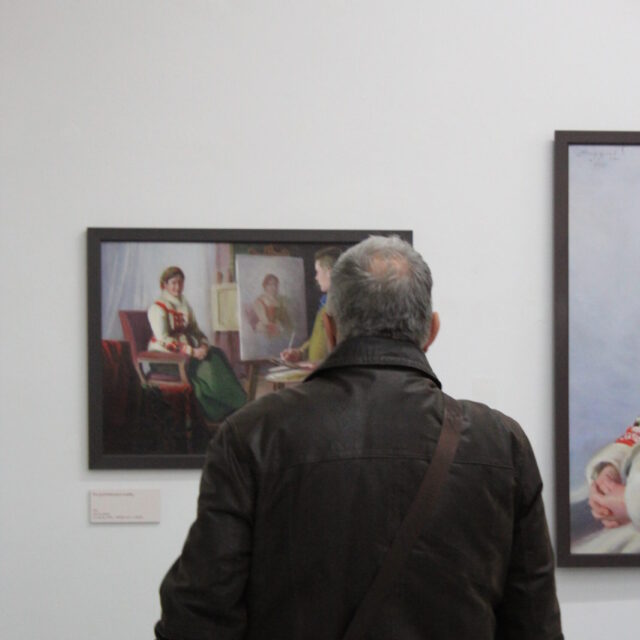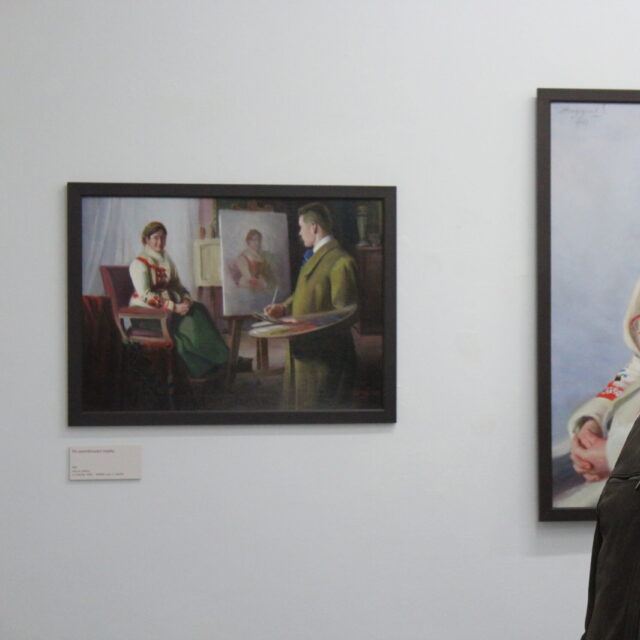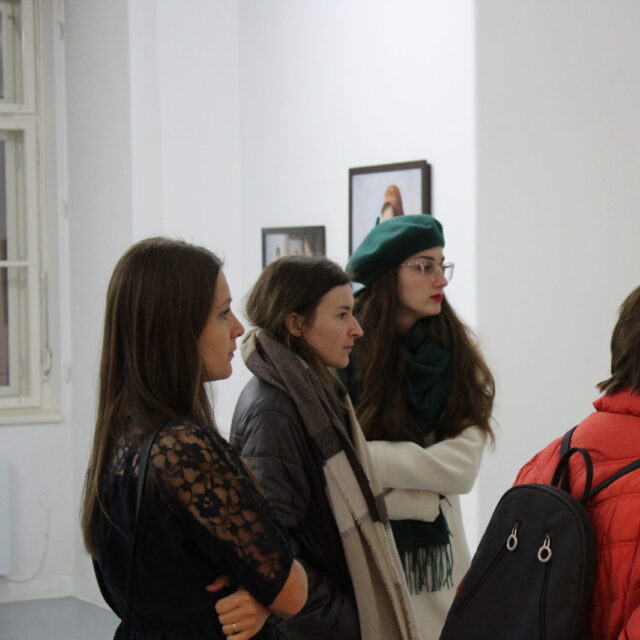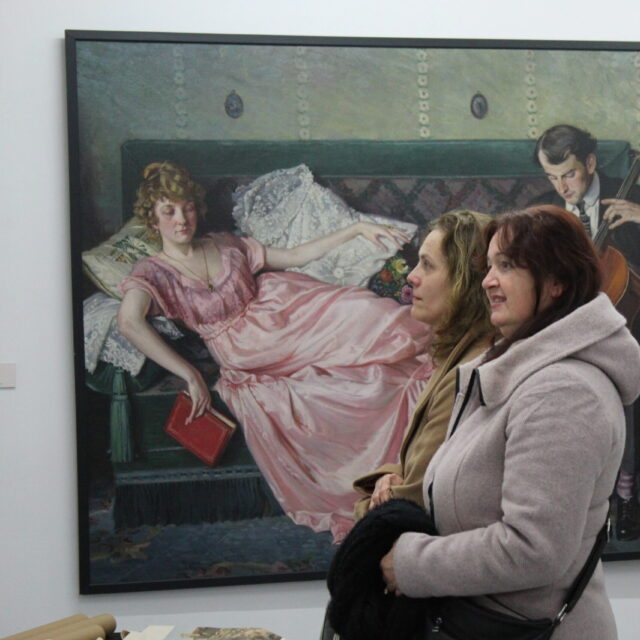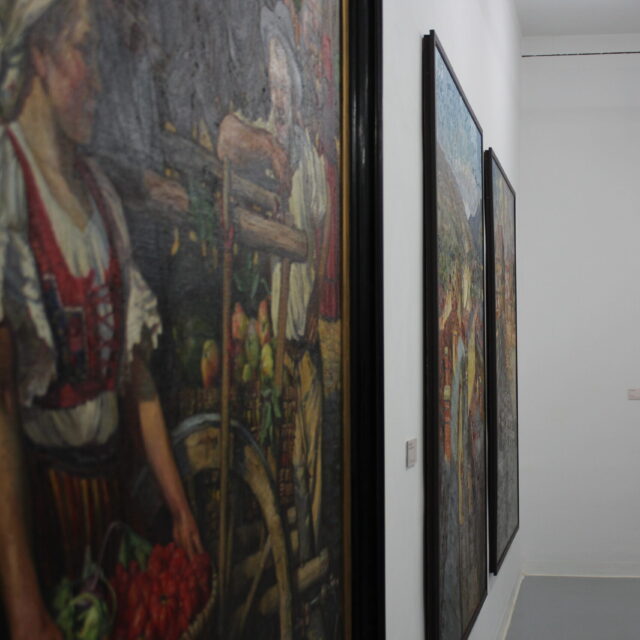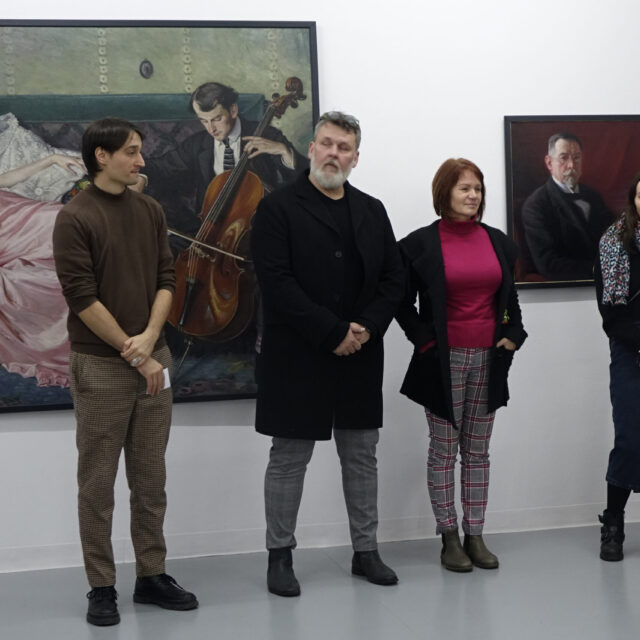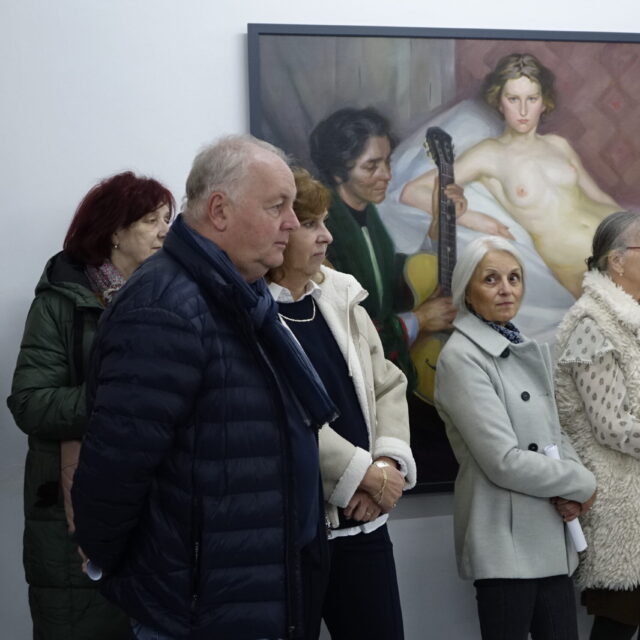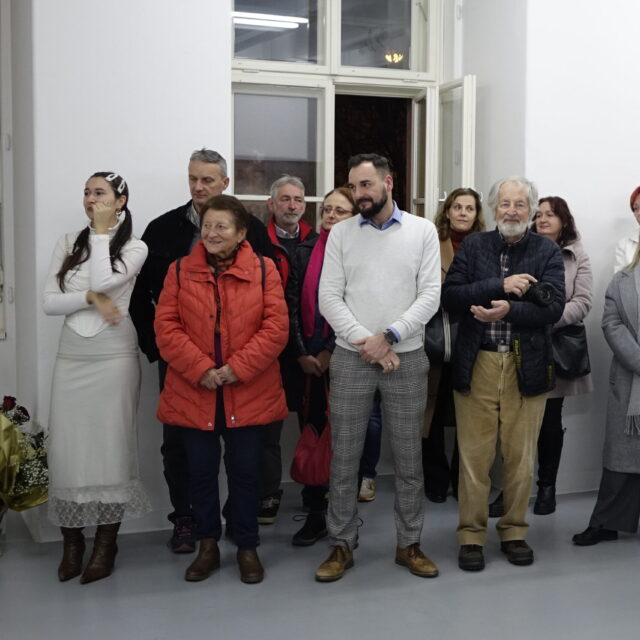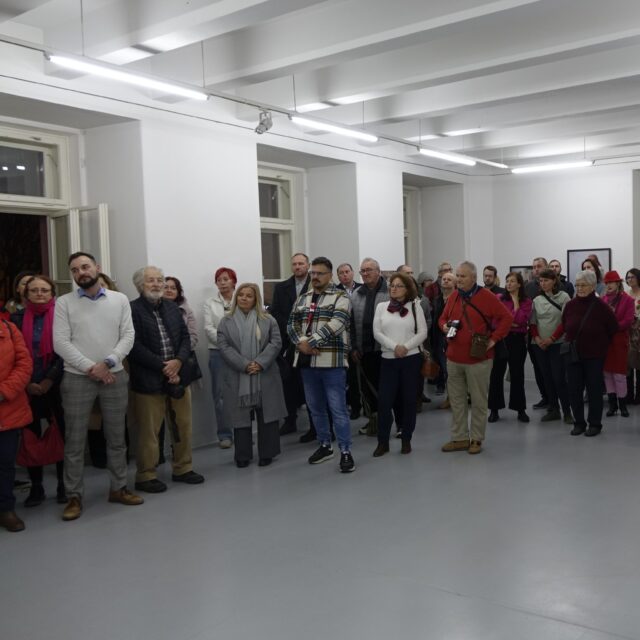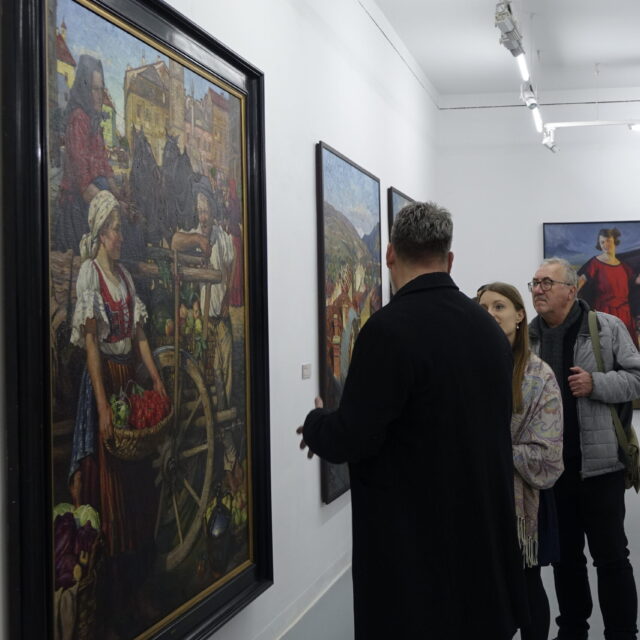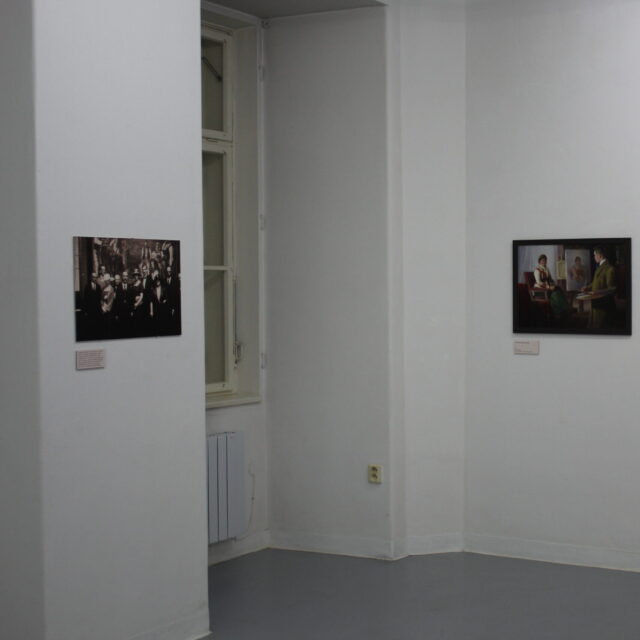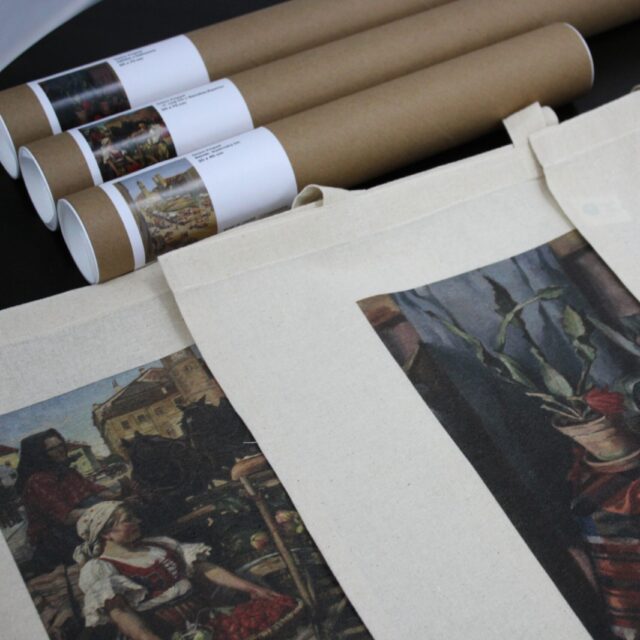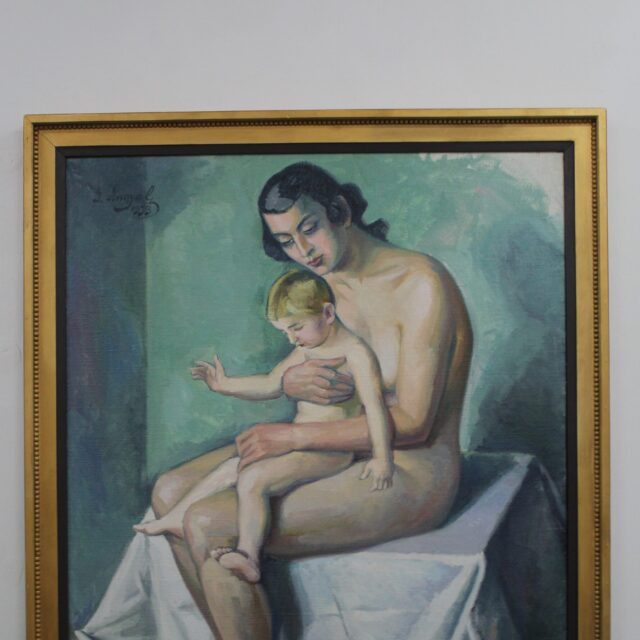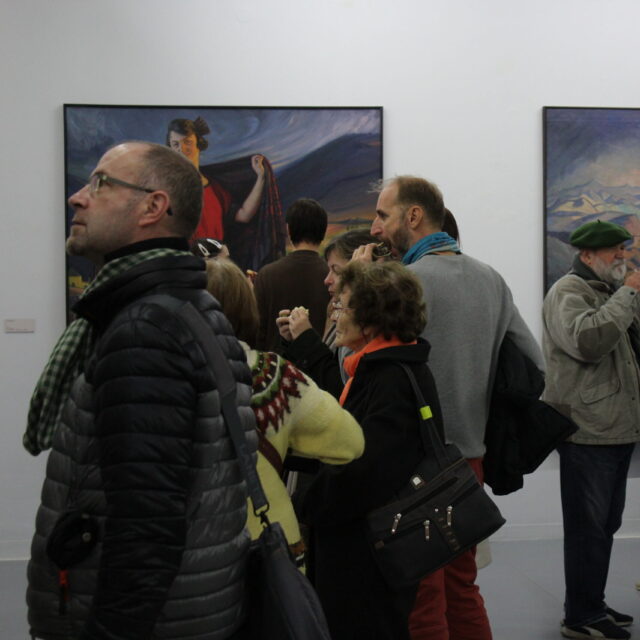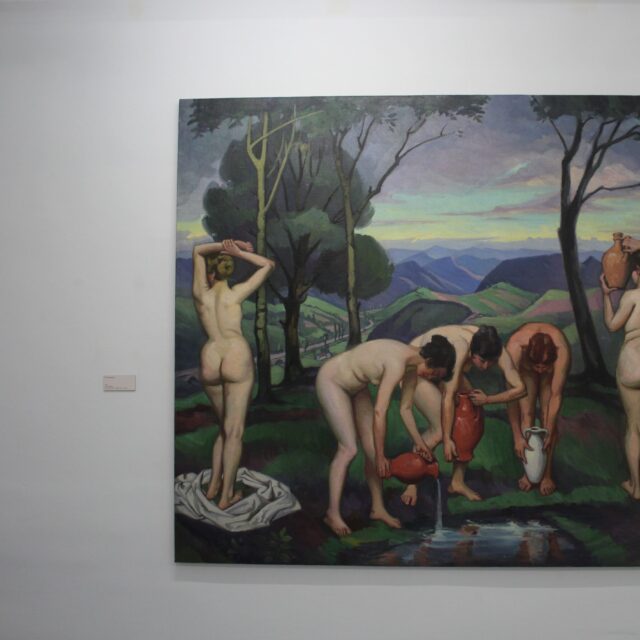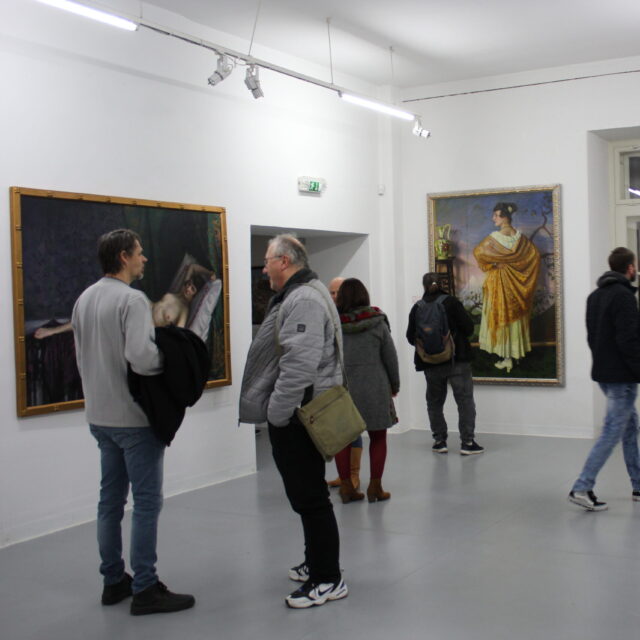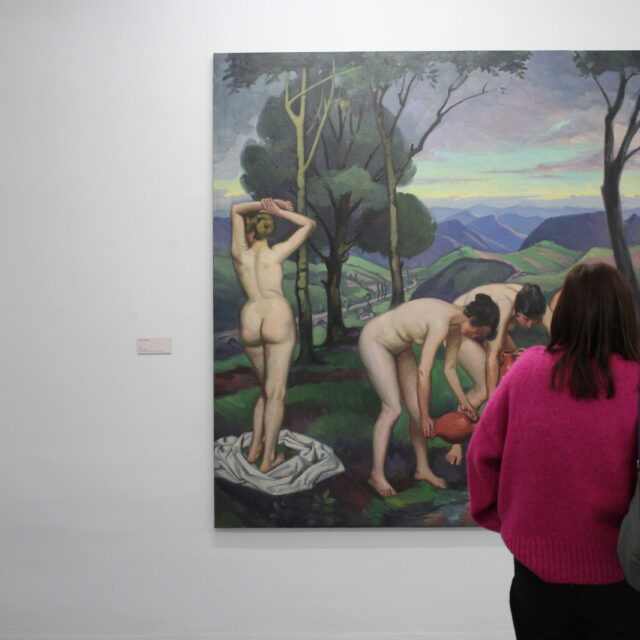The exhibition presents for the first time a restored selection of paintings by Gejza Angyal (1888–1956) from the collection of the National Bank of Slovakia – the Museum of Coins and Medals in Kremnica. Its collection contains the extensive heritage of the cosmopolitan Angyal family, active in Kremnica since the end of the 19th century. The selection also includes unique large-scale, almost monumental paintings by Gejza Angyal, which have not been exhibited for a long time. These paintings have also been laboriously deposited and rolled up, which is why a delicate restoration was necessary.
The painter Gejza Angyal was active in Banská Bystrica at the beginning of his artistic career and during World War I as a professor of drawing at the local vocational school. He completed his previous art studies in Budapest and during his additional stay in Munich. The local environment, just like his hometown of Kremnica, provided him with stimulating themes for his early prints and definitive paintings. In them, he was able to capture distinctive characters of the historic mining towns, their social structure, traditional work and craft, historical architecture, and the surrounding mountainous landscape. After his initial work in Banská Bystrica, Angyal returned permanently to his hometown of Kremnica and devoted himself mainly to painting. He was an active member of the cultural scene, exhibiting in local and foreign art centers, winning prizes, gaining artistic contacts and memberships (e. g. in the Societé Nationale des Beaux Arts in Paris), and frequently making study trips to Italy, France, and Scandinavia. His artistic development was firmly anchored in realism, but he gradually succumbed to contemporary influences such as luminism (the so-called Central European variant of impressionism), his early graphic work showed an even more naturalistic tendency, and at the peak of his career, a more modern expression and a more analytical construction of landscapes began to prevail.
The current exhibition of selected paintings shows lesser-known aspects of Angyal’s work, such as the once ideologically favoured theme of miners or the popular urban veduta and landscape paintings. From an early period, he was more intensely involved in the creation of nudes and full-length portraits of women, often stylized in the form of Spanish dancers, which he also composed impressively in the surrounding natural scenery. He found direct inspiration in the work of Spanish painter Ignacio Zuloaga (1870–1945). Angyal had been interested in his work since his studies and later came into closer contact with him during his stay in Paris (as described in Angyal’s monograph published during his life). From this impulse, Angyal gradually developed his own style: he started creating large-scale genre compositions in which he monumentalized characteristic types of figures against the compelling scenery of his home country.
Another represented thematic area of the painter’s already mature work, following the local work-related theme, captures and connects global themes and major historical events, such as the economic crisis and the threats of World War II. Scenes of hard-working, later even desperate women and mothers against the backdrop of wartime horror emerged. The final theme of bombing concludes Angyal’s distinctive collection of monumental paintings with a social message. In them, he deals with civilizational themes that are almost essential, from themes related related to religion, labour and the environment, to the contrast of themes of motherhood and destructive war. The selection of restored paintings is appropriately complemented by related works by the artist from the Central Slovak Gallery collection.
The exhibition is realized in cooperation of the Central Slovak Gallery with the National Bank of Slovakia – the Museum of Coins and Medals in Kremnica and with the Slovak National Gallery – Zvolen Castle, where the digitization was carried out.
In 2023, the National Bank of Slovakia – the Museum of Coins and Medals in Kremnica approached the Central Slovak Gallery in Banská Bystrica for professional cooperation on the upcoming project of a long-term exhibition of academic painters, father and son Angyal. The rich museum collection of artworks by these artists from Kremnica and the fact that Banská Bystrica was Gejza Angyal’s primary place of work after his studies were the impetus for presenting a wider range of his paintings along with motifs associated with this place in Banská Bystrica. After expert research, selection of artworks, their restoration, digitization, and adjustment, the exhibition is being held on the premises of the Central Slovak Gallery.
The founder of the Central Slovak Gallery is the Banská Bystrica Self-Governing Region.

